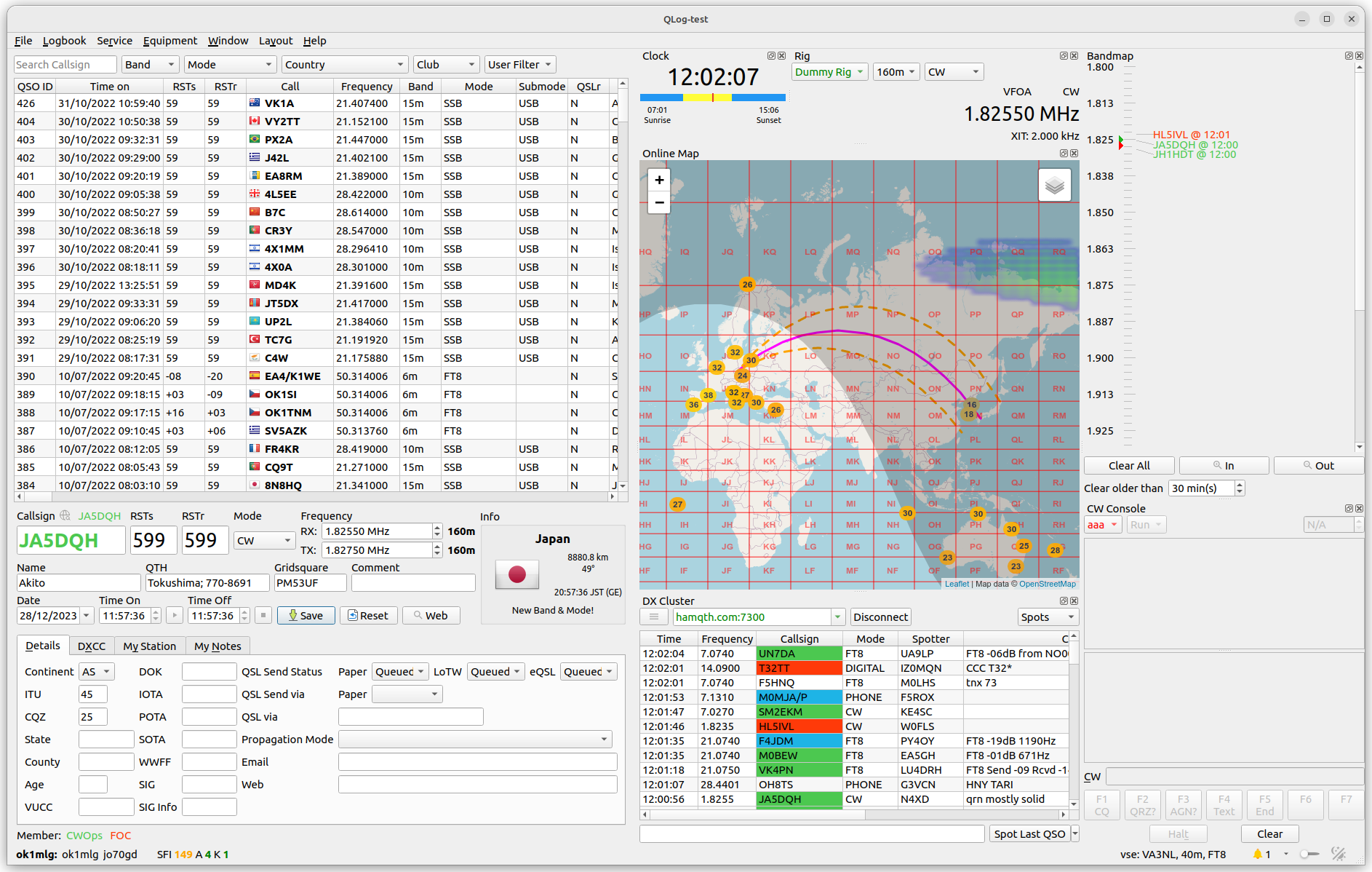-
Notifications
You must be signed in to change notification settings - Fork 31
Main Window
The main windows is divided into the following sections:
- QSO Table
- QSO Filters
- New QSO
- Additional Windows
QSO table is a core component of the main windows where all user’s QSO are shown. The default setting of the table shows only selected QSO information such as Time, Call, RST, Frequency etc.
The QSO information can be edited when use press CTRL+E (or F2) on the selected value. It is also possible to start Edit mod via windows Context Menu (Right-click)
QSO Table implements full set of ADIF fields and one additional field Additional Fields. The Additional Field contains all non-ADIF field or ADIF Application-Defined fields in JSON form. It is up to the user to decide what to store here, but the field is limited by the fact that it must be in JSON format and the fields have to have format described as ADIF's Application-Defined Fields .
Example of the Additional Fields format
{ "app_cqrlog_dxcc": "F", "app_cqrlog_profile": "2|JO70GD|Bohdanecska||" }
The additional fields are exported to the files but they are not sent to the external services LoTW, eQSL etc.
The QSO summary information can be displayed as a tooltip of the Callsign column.
| Context Menu Field | Description |
|---|---|
| Edit Value | Editing of the currently selected logbook field. If more than one row is selected, these row are changed so that the value of the edited item is used for all selected records |
| Export Selected | Export currently selected logbook record |
| Filter Callsign | uses currently selected callsign as a callsign filter |
| Lookup on QRZ | search callsign on QRZ |
| Column Visibility | Logbook column visibility setting |
| Delete | deletes currently selected logbook record |
The user can display received QSL cards from eQSL by double-clicking on column eQSLr. QSL Image is downloaded from eQSL service and shown in default image viewer. The image is locally store for future usage.
If user wants to import/show a paper QSL then it is possible via double-clicking on the column QSLr.
In both cases the field must have the value 'Y'
The QSO Table can be filtered via callsign, pre-defined or user-defined filters.
Qlog has 3 pre-defined filters
- Band Filter – only enabled bands are shown
- Mode Filter – only enabled modes are shown
- Country Filter – only countries in the log
User-defined filter can be defined via Logbook → QSO Filters setting.
All filters, callsign match, pre-defined and user-defined filters can be used in the same table. The result is computed as logical statement
callsign AND band AND mode AND Country AND user-defined
An user can insert many QSO parameters (Details Tab). Some of them are computed automatically (Continent, ITU, CQZ etc), some of them have an auto-completion feature (IOTA, SOTA), some of them have a free text format.
The SAT Tab is active only in case when Propagation mode is set to “SATELLITE”. An user can define the name of SAT and used mode.
DXCC Tab shows DXCC information related to the current callsign.
My Station Tab contains information related to an own station. The important parameter is Station Profile. The station profile defined own callsign, own gridsquare, own QTH and operator name. Beside mentioned the station profile, the Tab contains Antenna, Rig profiles.
My Notes Tab is used to store your own general notes about the QSO – free text.
If the current Rig Profile contains a RX/TX frequency offsets the QLog shows recalculated RX/TX frequencies.
If a new QSO is saved then additional information are stored or computed:
- Distance (when Locator is present)
- value of SFI, k-index, a-index
- etc.
Qlog contains additional Windows
All Windows can be docked inside the Main Application Window or floated as a top-level window on the desktop. The windows layouy is saved automatically.

